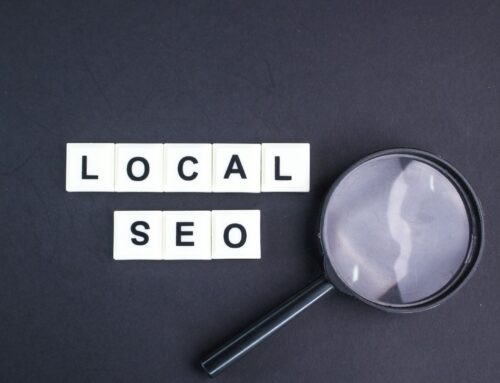Table of Contents
What is Bounce Rate, and Why is it Important?

Many metrics help determine the performance of your website.
Bounce rate is one of the metrics that help measure the performance of websites. The metric specifically determines customer engagement when they visit your site.
What is a Bounce Rate?
A bounce rate refers to the percentage of customers or users that leave a webpage after viewing only one page or without taking an action, such as making a purchase, filling out a form, or clicking a link.
It simply means users landing on a page on your website and leaving without browsing further or engaging any call to action, making it a “one-and-done” visit.
Bounce Rate vs. Exit Rate
A key factor you should consider is the difference between bounce rate and exit rate.
Bounce rate is when a visitor of your website leaves after only viewing a single page, which in most cases is usually the landing page.
On the other hand, an exit rate includes the percentage of people that most likely visit multiple pages on your website, where the last page they visit determines the exit rate.
This makes the concept of exit rate a little more complicated.
However, knowing the basic difference between the two helps you know what your website needs.
The best way to understand the difference is with an example.
In this case, let us say you have a thank-you page from which you are comparing exit rates with bounce rates.
The assumption is that you have the goal of getting conversions from the thank-you page, which includes a call to action.
A high bounce rate would mean people are only viewing that page without taking any other action. This would be alarming because you are losing out on conversions.
On the contrary, a high exit rate would be a good thing.
The visitors who exit from this page most likely got here from the landing page and took the needed actions, such as downloading the offer and going to make use of it.
This is basically a conversion, which is a win.
What is the Average Bounce Rate?
The bounce rate formula involves dividing the total number of single one-page visits by the total number of users that visited that page.
This gives the percentage of visitors who only viewed that single page or landing page, translating to bounce rate.
There is no standard “average” rate. For some, it ranges between 41% and 51%, while others identify the average as any number between 26% and 70%.
Regardless of the perceived average bounce rate, you should know that the higher the percentage, the more alarming news it is for you.
Determining a Good Bounce Rate for Your Website
The type of website determines whether your bounce rate is good or bad.
Therefore, you should not feel discouraged when you find a relatively high rate before looking at the recommended average for the type of website you have.
At the same time, it is worth mentioning that you will be more frustrated when you choose to aim for a 0% bounce rate.
Some of the different websites with their average bounce rates are:
Blogs, portals, and dictionaries: 65% to 90%
Landing pages: 60% to 90%
Non-commerce content websites: 35% to 60%
Lead generation websites: 30% to 55%
B2B websites: 25% to 55%
E-commerce and retail websites: 20% to 45%.
From the numbers outlined above, the reason for the lack of standardization in terms of average bounce rates becomes clear.
After determining your type of website and the subsequent average bounce rate, you should know that anything above or below the average bracket means some things in your website should be double-checked.
Elements such as third-party add-ons, incorrectly implemented tracking, and duplicate code can be resulting in incorrect rates.
Another important factor that determines a good rate is the device your website’s visitor is using.
The average bounce rate on a desktop is 43%, while that of tablets is 45%.
Mobile devices have the highest bounce rates regardless of the type of website, reported as 51%.
Understanding these dynamics makes you more objective when judging your website’s rate because you will know where the traffic is coming from and the expected percentages.
A key takeaway in determining a good bounce rate is that the further it is from the stipulated average for your site, the easier it is for you to identify the issue and improve customer engagement.
For example, an alarmingly high bounce, such as one above 90%, could mean browser incompatibility, excessive bots, errors in your tracking code, or just bad design.
The primary thing you have to do is take practical steps to examine pieces of your web and other metrics to see the real issue.
Why Do People Bounce?

Poor User Experience
The experience users have when visiting your website is a critical determinant of their level of engagement.
Auto-playing videos, annoying pop-ups, and intrusive ads are some of the features that give users a bad experience and cause them to leave without viewing other pages of your website.
Under-optimized Content
The quality and value of the content you publish significantly affect bounce rates.
For example, if your website uses the blogging type of content, irrelevant topics, overly long paragraphs, and grammar errors can cause users to bolt out of your website as soon as they land.
Click here (Insert Madavi link) for more details on the importance of good content marketing.
Technical Error or Blank Page
Blank pages and technical errors can quickly reduce the percentage of visitors that explore what you have to offer.
In as much as your website may rarely experience technical issues, server errors and blank pages can also give your website a bad reputation in the long run.
Misleading Metadata
Currently, website visitors want to find information quickly; hence they have a short attention span.
For this reason, you have to ensure the content accurately reflects the meta and title tag description of the page.
When this is not the case, visitors may end up confused and click out to continue their search for relevant information elsewhere.
Self-sufficient Content
As odd as it sounds, sometimes your high bounce rate may be the result of meeting the expectations of users. In many cases, this is nothing to worry about.
When the information they find on the landing page is efficient, they will get what they came for and bounce.
Your goal will be to look at other metrics, such as the time spent on the page, to know whether you are meeting your digital marketing goals.
Slow Loading Pages
Again, as already mentioned, contemporary users want quick results and find websites that load slowly insufferable.
When your website fails to deliver fast results by loading slowly, visitors will leave without further engagement to look for quicker solutions.
How to Improve Your Bounce Rate
Improve Page Load Speed
Since it is already determined that the speed with which a page loads breaks or makes user experience, your goal should be to improve this aspect of your website.
The higher the loading speed of a page, the higher the probability that people will bounce less. A statistic presented by Semrush based on a Google page-speed study of 11 confirms this theory.
Optimize Your Mobile User Experience
Now you know that mobile devices present the highest bounce rates. However, you should know that more than half of all web traffic across the globe comes from mobile traffic.
Hence, you have the responsibility of ensuring your website is mobile-friendly, including having responsive images, large fonts, and intuitive images.
Satisfy Search Intent
Providing quality and valuable content on your website is a good way to increase visitor engagement, which translates to reducing bounce rate.
If you can meet the expectations or goals of the user’s search, you will achieve this outcome and even build trust among your site’s visitors.
Such outcomes will draw you closer to meeting your digital marketing goals.
Purposely Use Internal Links
Internal links direct users to other pages within the website where they can find more information or content. Hence they will stick around and possibly browse additional pages on your website.
You have to ensure that the internal links or hyperlinks you include in the content are related to the post on the landing page.
This gives your website’s visitors an opportunity to click and read additional content they may be interested in.
You will have reduced your bounce rate as a result and increased user engagement with the content on your website.
Use Different Sources to Analyze Your Bounce Rate
It is common to include external links in your content for credibility purposes. However, sometimes this is the source of your high bounce rates.
This recommendation is closely tied to that of including internal links to related information.
External links cause users to leave the page and your website by clicking on the external links you have provided.
Therefore, while including external links is equally important in terms of adding credibility to your content, you should direct them internally first.
Simply put, examine the bounces stemming from external links to see if it is a course for concern that needs to be rectified.
Reduce Disruptions that Might Distract Users
If you decide to use pop-ups within your content, make sure they are well-crafted inbound messages or content that add value to the information the user is seeking.
This will not only reduce bounce rates but will also increase engagement since they may click on the pop-ups, resulting in conversions.
A lot of caution is needed, however, because there is a thin line between the pop-ups being useful and disruptive.
You should seek the help of digital marketing agencies if you think you might find this strategy challenging to implement.
In conclusion, bounce rates are a single metric that is essential for analyzing user engagement with the content on your site.
When your bounce rate is high, consider all the possible sources, the type of your website, and the average rate of that type of website before taking any action.
This will ensure that your efforts to reduce your bounce rate are paying because you will be addressing the main underlying issue efficiently.
If you find all this overwhelming, there is always the option of seeking the services of a marketing agency because they know what to look for and how to fix it.







